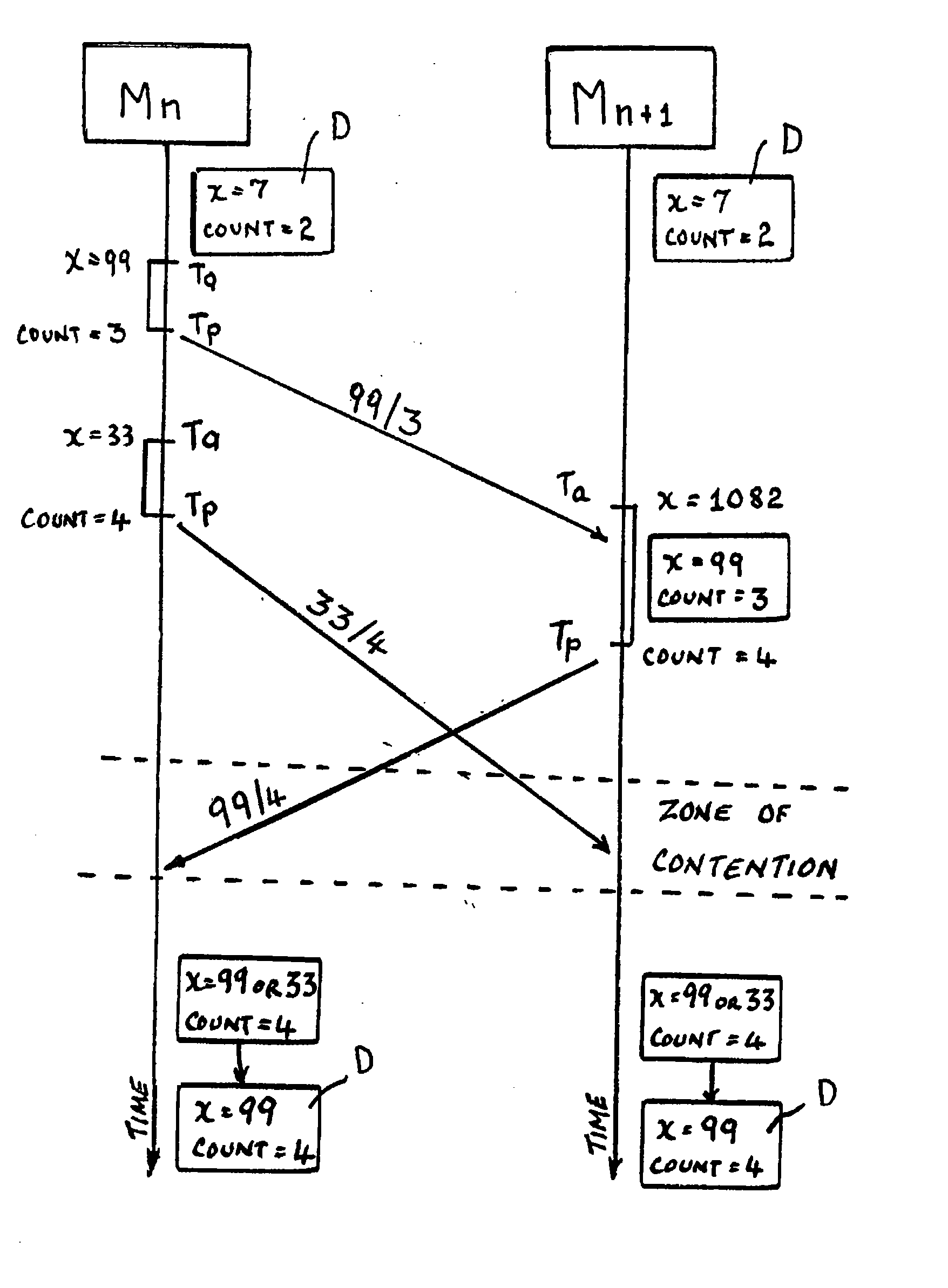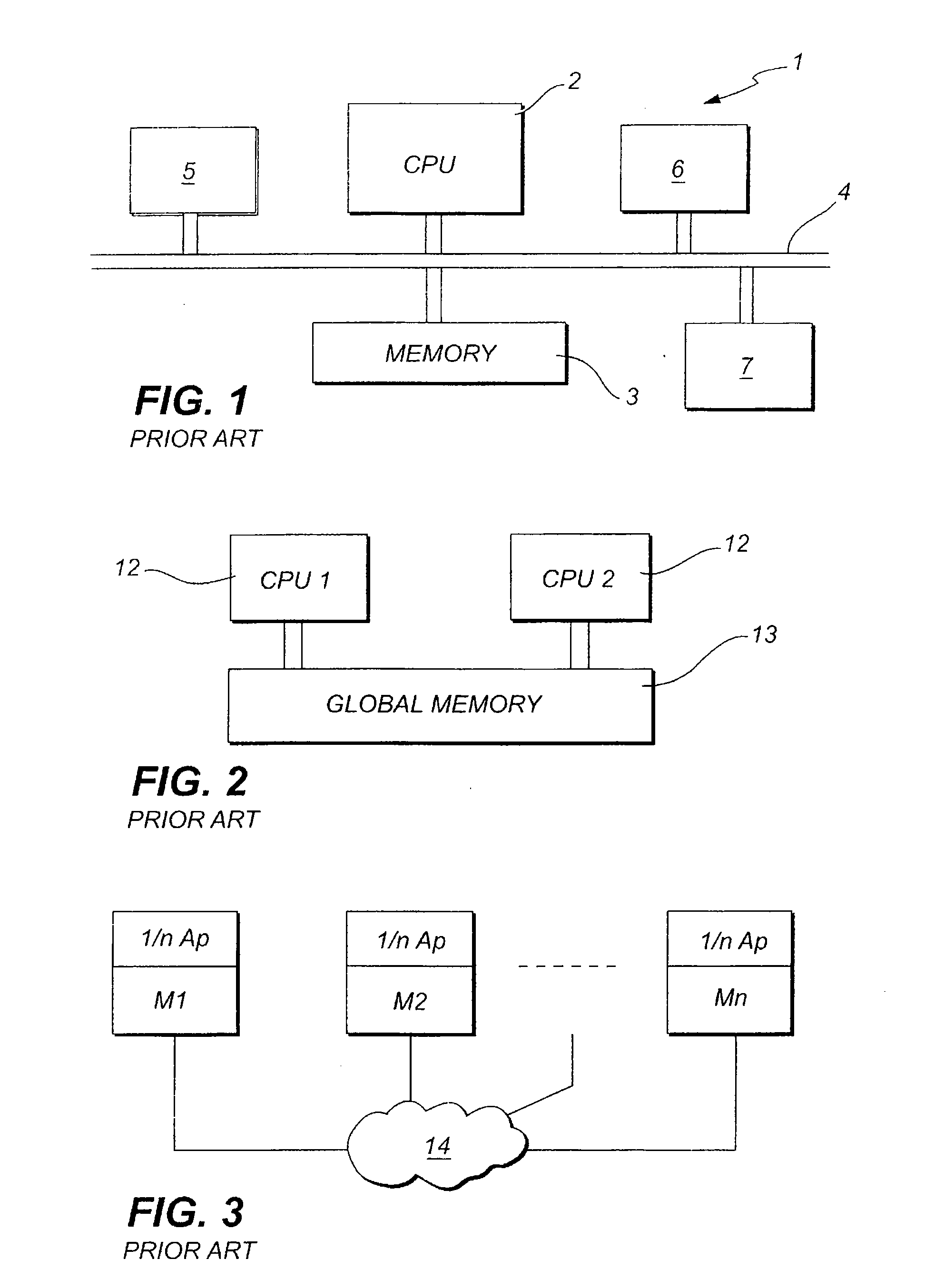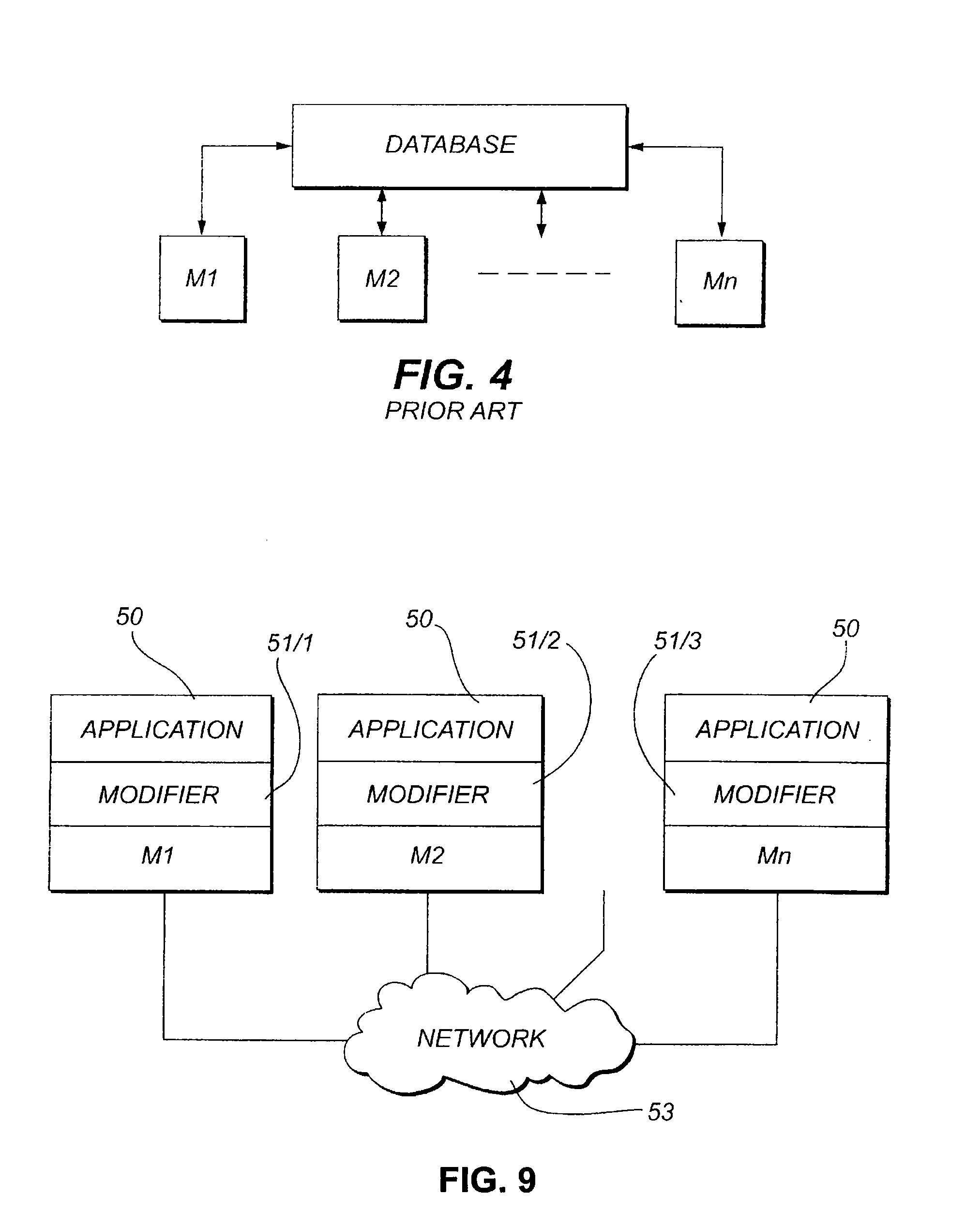Computer Architecture And Method Of Operation for Multi-Computer Distributed Processing Having Redundant Array Of Independent Systems With Replicated Memory And Code Striping
a distributed processing and computer technology, applied in the field of computer architecture and method of operation for multi-computer distributed processing, can solve the problems of inability to scale over “commodity” (or mass produced) computers and networks, invariably increasing the administrative overhead of machines, and extremely expensive not only to manufacture but to administer
- Summary
- Abstract
- Description
- Claims
- Application Information
AI Technical Summary
Benefits of technology
Problems solved by technology
Method used
Image
Examples
first embodiment
[0334]In the first embodiment, a particular machine, say machine M2, loads the asset (such as class or object) inclusive of memory manipulation operation(s), modifies it, and then loads each of the other machines M1, M3, . . . , Mn (either sequentially or simultaneously or according to any other order, routine or procedure) with the modified object (or class or other asset or resource) inclusive of the new modified memory manipulation operation. Note that there may be one or a plurality of memory manipulation operations corresponding to only one object in the application code, or there may be a plurality of memory manipulation operations corresponding to a plurality of objects in the application code. Note that in one embodiment, the memory manipulation operation(s) that is (are) loaded is binary executable object code. Alternatively, the memory manipulation operation(s) that is (are) loaded is executable intermediary code.
[0335]In this arrangement, which may be termed “master / slave...
second embodiment
[0598]In a second embodiment illustrated in FIG. 71, the machine, say machine M7, wishing to acquire the lock repeats steps 31 and 32 of FIG. 66 (illustrated as steps 81 and 82 in FIG. 71). However, machine M7 then carries out step 83 in FIG. 71 by sending a “DO YOU HOLD LOCK” request, which names the desired object, asset or resource to be locked, to all the other machines M1, M2, . . . M6, M8, . . . Mn and X. Machine M7 then waits for a short predetermined period to see if any positive reply is received. If so, machine M7 then waits for a relatively long predetermined period and then retries by sending out another request (as indicated by steps 84, 85 and 86 of FIG. 71).
[0599]In the alternative, if no positive reply is received within the short predetermined period, machine M7 then instructs machine X to confer the lock upon it (as indicated by steps 84, 85 and 87 in FIG. 71). Once machine X confers the lock, machine M7 resumes normal processing.
[0600]The corresponding actions tak...
PUM
 Login to View More
Login to View More Abstract
Description
Claims
Application Information
 Login to View More
Login to View More - R&D
- Intellectual Property
- Life Sciences
- Materials
- Tech Scout
- Unparalleled Data Quality
- Higher Quality Content
- 60% Fewer Hallucinations
Browse by: Latest US Patents, China's latest patents, Technical Efficacy Thesaurus, Application Domain, Technology Topic, Popular Technical Reports.
© 2025 PatSnap. All rights reserved.Legal|Privacy policy|Modern Slavery Act Transparency Statement|Sitemap|About US| Contact US: help@patsnap.com



